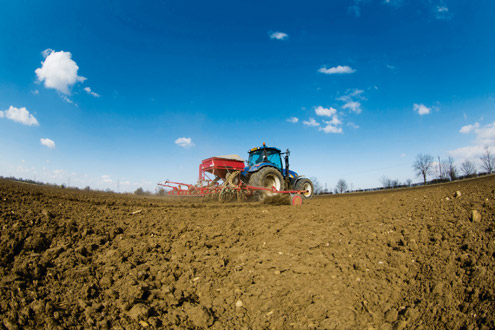Top 10 tips on controlling blackgrass this autumn

The spread of herbicide-resistant blackgrass is one of the most important threats to wheat growing in many areas, but some top UK growers are managing to get on top of the problem by deploying a range of measures.
Looking at the results from the first two years of Syngenta’s Grassweed Manager of the Year competition, judges Stephen Moss of Rothamsted Research and Jason Tatnell of Syngenta say there are some clear factors for their success. The two winners were Richard Hinchcliffe in 2011 and last year former Barometer farmer Edd Banks took the title.
“Common to all of our finalists has been a thorough understanding of the control techniques available to them, as well as good reasons why they sometimes can’t be used,” says Mr Tatnell.
“We have seen some great examples of best practice, delivered within the various financial and logistical constraints that exist on individual farms.” Dr Moss pulls out his top 10 tips based on how the two winners and eight finalists were successfully tackling resistant blackgrass.
1. Foresight
A willingness to take the longer-term view was impressive on finalists’ farms, says Dr Moss. “They recognised that farms and fields were different and that decisions that some could make, such as fallowing, were impossible for others to do.
“They also had a realistic attitude to risk. Delayed drilling was a classic example of that – it’s a risk that often pays off.”
2. Flexibility
This applied to both cultivations and cropping strategies, he notes. “The best farmers are happy to change their plans on an individual field basis and to maintain some in-season flexibility.
“They are making decisions on a rational basis, sometimes at the last minute, rather than sticking to a rigid plan.”
3. Attention to detail
All aspects of the best weed control systems received attention, from the equipment used right through to record-keeping, reveals Dr Moss.
“They knew what they had done and had thought it all through. Everything that could be done was being done.”
4. Farm knowledge
Whether it was from regular field walking or doing their own spraying, all of the finalists had an excellent knowledge of their farm and its limitations.
“The importance of good drainage for blackgrass control, for example, was understood. Some even sprayed off bad areas of fields, or redrilled local patches.”
5. Farm diversity
A recognition that all farms were different and that there was no blueprint for good blackgrass control was seen in all the competition finalists.
“Not only that, every farmer or manager realised that they were not identical to each other. So following someone else’s approach to a tricky problem was unlikely to work as well for them.”
6. Continual learning
Nearly all of the finalists were BASIS and FACTS qualified, reports Dr Moss, and they used a variety of sources for information.
“They were well-informed and kept themselves up to date with the latest grassweed developments. Most had agronomists, but made sure they had an input, too.”
7. Decision-making
A new mindset was apparent with the best grassweed managers, he continues.
“Many of the farms had been at cracking point with blackgrass. Once that had been acknowledged, there was recognition that herbicides alone are not the complete solution. A wider view had been taken.”
8. Destiny
All of the finalists appreciated that actions performed at the farm level would have implications for future weed populations.
“They took responsibility for the problem,” says Dr Moss. “They knew that the situation was under their own control and that their actions would help to solve it.”
9. Farm staff
Involving farm staff in weed management proved invaluable for most of the finalists. Teamwork was the best approach and allowed professionalism to develop.
“We saw some great examples of this – from cleaning the plough off between fields to prevent the spread of weed seeds to sending staff on training and field days.”
10. Agronomics
Specific agronomic issues came up time and time again, reports Dr Moss. “There were a great deal of these, but it showed how they were managing to do such a good job.”
Wild oats and brome, not just blackgrass, were causes for concern on many of the farms, while the importance of good crop rotation, including spring cropping, was recognised by all.
“Most were delaying drilling, up to mid-October, and all were using higher seed rates. Wherever possible, they were opting for more competitive varieties.”
There was no clear cultivations technique winner but, although the value of rotational ploughing was appreciated.
“In terms of herbicides, all of them were looking to get the maximum control from pre- and peri-emergence treatments, to take the pressure off the post-emergence options, and to use the full range of herbicides available to them.”
Resistance testing had been undertaken on nearly all of the finalists’ farms, although the results weren’t always being used to fine-tune herbicide applications, he adds.
Spring cropping was recognised, with both spring beans and maize being adopted widely. Spraying techniques had been altered so that most were travelling at 12km/hour, using angled nozzles to ensure the best weed target coverage.
“Growers were also aware that they needed to give herbicides enough time to dry off, so they aimed to spray before midday.”
Interactions between herbicides and cultivations were well understood, while innovative techniques such as inter-row glyphosate spraying were being tested, he says.

